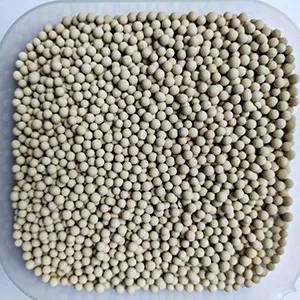3A molecular sieve is a type of crystalline aluminosilicate adsorbent characterized by its uniform pore size of 3 angstroms (0.3 nanometers), a feature that defines its selective adsorption properties. Composed of silicon, aluminum, and oxygen atoms in a tetrahedral framework, it contains cationic sites (typically potassium) that enhance affinity for polar molecules, particularly water.

This molecular sieve’s key trait is size exclusion: it allows only the smallest molecules—such as water (2.8 Å) and ammonia (2.6 Å)—to enter its pores, while blocking larger substances like ethanol (4.4 Å) or methane (3.8 Å). This selectivity makes it ideal for applications requiring precise moisture removal without altering the target material’s composition.
In industrial form, 3A molecular sieve is shaped into pellets, beads, or powders suitable for packing in columns or drying units. Its structure remains stable at temperatures up to 300°C, enabling regeneration via heating to release adsorbed water, a process that can be repeated hundreds of times without significant performance loss.
Widely used in gas and liquid drying, it purifies natural gas, refrigerants, and solvents by removing trace moisture, preventing corrosion or chemical degradation. Its unique combination of pore size and chemical properties positions 3A molecular sieve as a specialized tool in separation science, distinct from larger-pore sieves like 4A or 5A.

